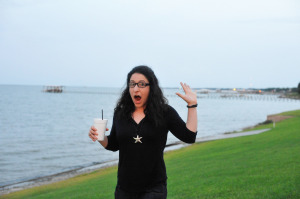by Sam Tackeff | Jul 1, 2018 | Food Travel, Restaurants, Shopping, Travel, Uncategorized
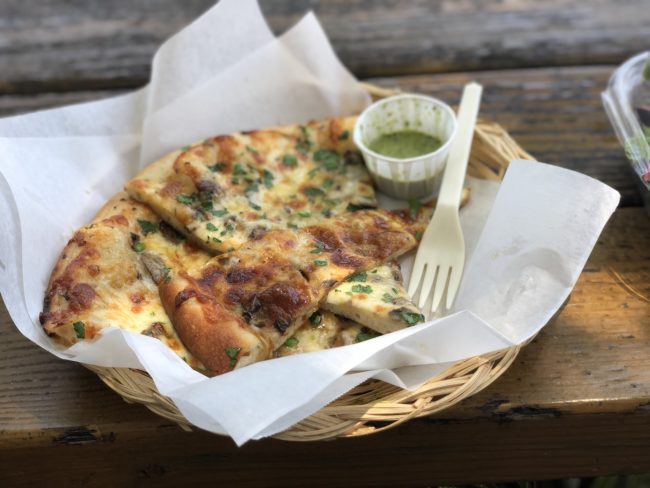
I’m back from a week in California, and food is lingering on my mind. This was a quick, intense work trip for my client in San Mateo, sneaking in under the radar (sorry, friends!!) While the focus of my time was very much on the job at hand, I was thankful that many client meals ended up being over good food, and I was able to sneak in a few meals across different parts of the bay.
Beyond the food, the weather was absolutely beautiful, and San Mateo had some great short trails for me to get in both my daily mile and some restorative long walks.
:: Meal Notes ::
My first meal off the plane was brunch at Plow (although depressing, as I went exclusively for the biscuit, which they ran out of while I was waiting in line.) I ordered “the Plow”, and a side of hollandaise. Scrambled eggs, crispy potatoes, a few rashers of Neuske’s bacon, and lemon ricotta pancakes. Next time, there’d better be a biscuit, and I’ll try their BLT if it’s still on the menu.
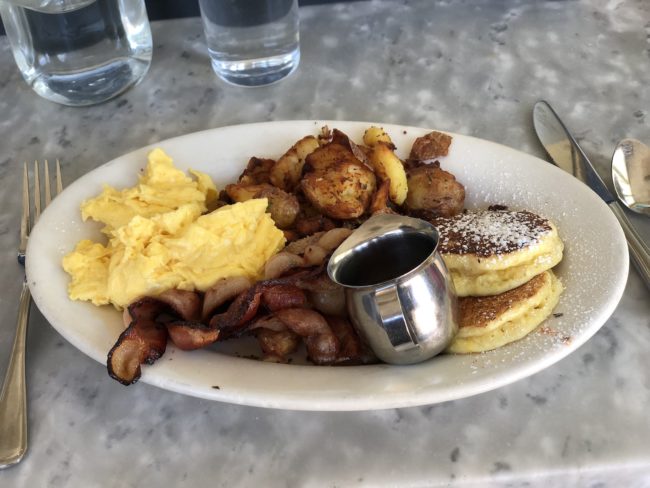
With the office in San Mateo, I ate several meals in the South Bay, including In Burlingame, where I imbibed an excellent virgin Paloma at Barrelhouse – grapefruit, lime, syrup, salt and seltzer. I’ve been craving citrus and it didn’t disappoint. Dinner at Limon Rotisserie: rotisserie chicken, Lomo Saltado, a ceviche trio – pulpo camaron, pescado, and camarones, yuca fries and tacu tacu (rice and beans).
There was a disappointing visit to Draeger’s (I remember it being more exciting?) where we stocked up on salad material, in contrast to a fulfilling one at Rainbow later in the week,where picked up some date balls, black tahini, a cashew chocolate caramel, and a glorious grapefruit. Meals at home included summer salads with chicken sausage on the grill, fresh parsley, mint, avocado and blue cheese. In California fashion, we also stocked up on good coffee, goat yogurt, raw sauerkraut, and a box of Its’-Its. One of my compatriots acquired a $25 bottle of mango cream coconut yogurt from the coconut cult – I won’t lie, it was delicious and I’d probably get another.
Admittedly while I love my morning Nespresso these days, the thing I was looking most forward to was my coffee routine at Philz. Usually an iced Tesora, either black or with a splash of cream before heading back to the office. They have a new mobile ordering system through their app which makes ordering reasonable. (Otherwise you don’t go to Philz in the morning if you don’t have time to kill…)
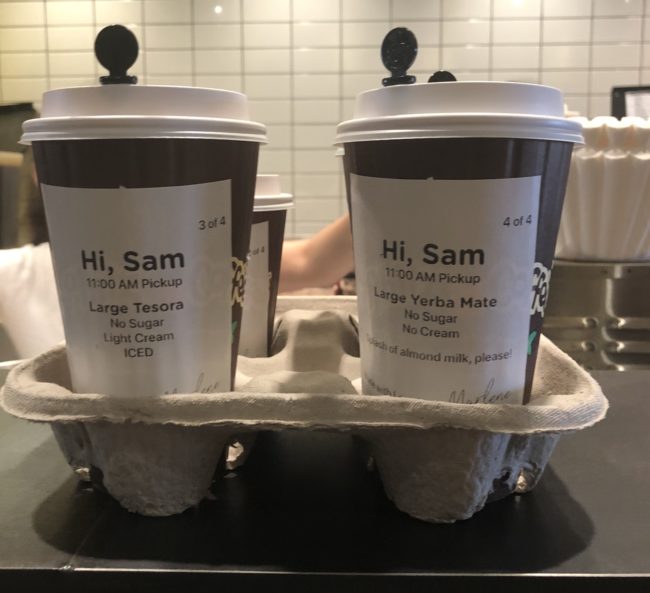
Mid-week office lunches included:
The Egg and Okra curry and tea leaf salad at Best of Burma. We don’t really have great Burmese food in the Boston area. (Nor Nepalese, or Filipino, a few more of my favorite cuisines living in SF.)
At one point, I rolled into the office with $200 dollars worth of tacos from Los Primos – barbacoa, al pastor, camarones, veggie, pescado, chicken, a few stuffed quesadillas, and a large container of refried beans. I ended up eating leftovers for a few days.
For an office happy hour we headed at Attic, with perfect crispy and salty sweet potato fries, lumpia cigarillos (double the length of normal lumpia), brussels sprouts with bonito flakes, oysters, and deviled eggs. I ordered a virgin “Calamansake” with soda water, muddled ginger, calamansi syrup and lime juice which hit the spot.
I organized an outing to Takahashi Market, an asian and Hawaiian market that has been open since 1906 (four generations!) where I picked up kalua pork with cabbage, spicy spam musubi, haupia, and a lilikoi cheesecake. (The cheesecake was saved for the following evening after a late night out.) I was given a large cardboard box to tote back my haul.
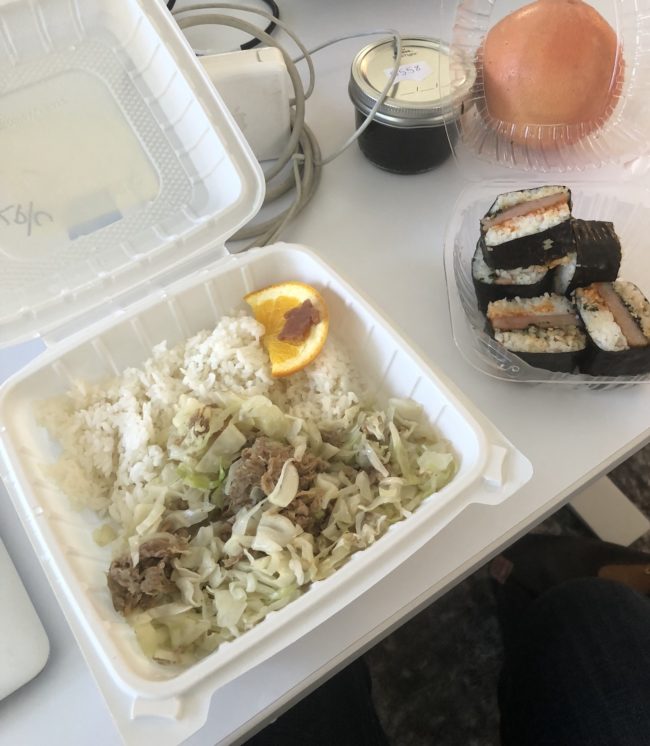
Most mornings I woke early, made a cup of coffee, pulled out my notebook, wrote and planned the day hours before going for a run and then heading into the office. This was the view. That astroturf was actually soft and stayed clean – by the end of the week I was praising them for their brilliance.
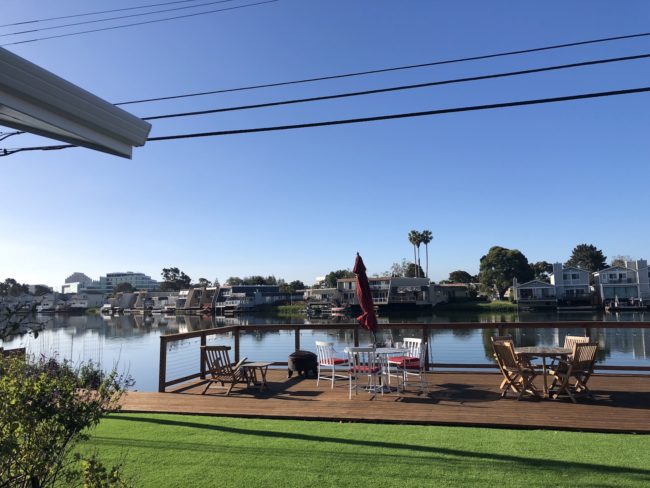
My walks were equally as beautiful in the morning and the evening, and my running route had me going past a dog park every day.
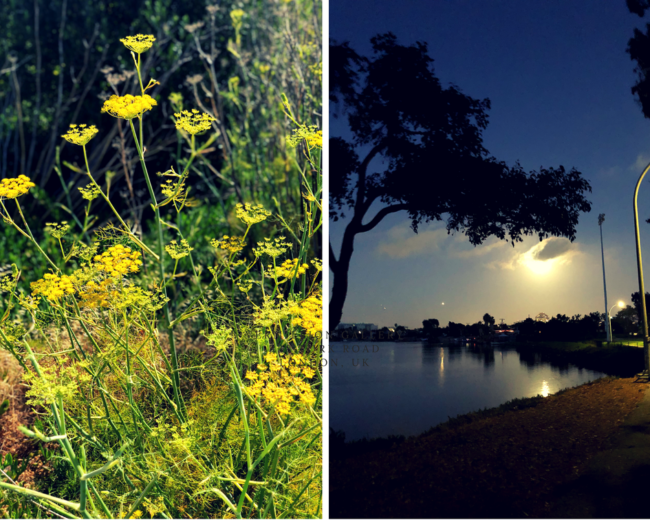
On Tuesday I made it into the city for a dinner at Hawker Fare which exceed expectations given the mixed reviews of friends. I had Thai iced tea, blistered green beans, crispy rice ball salad, pork laab, sticky rice, barbecue chicken (gai yang). Kat ordered a cocktail in a cat cup, and it came with an umbrella. Behold the fabulousness.
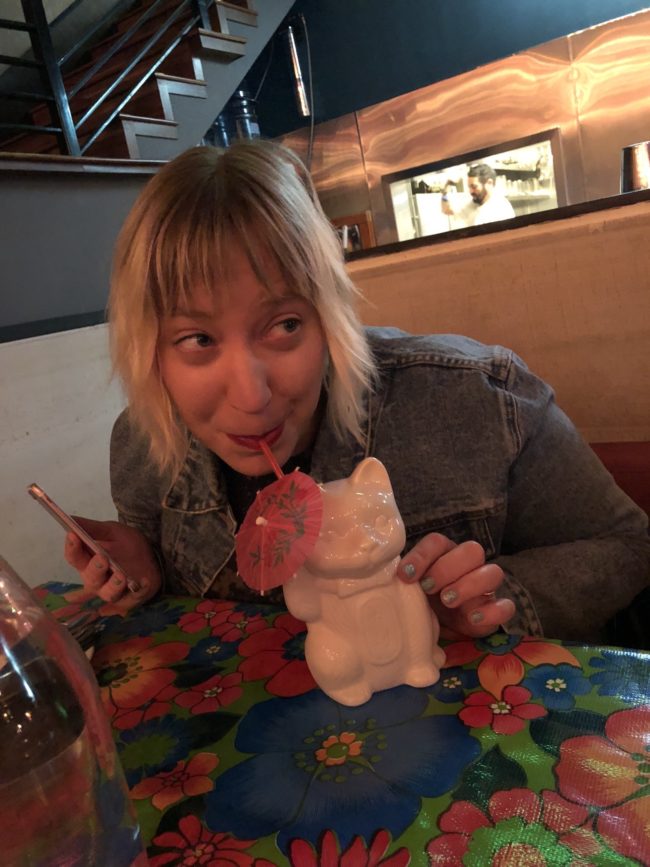
Before the evening was over, we hopped in a Lyft to head for dessert: a scoop of olive oil rhubarb ice cream at Humphrey Slocombe, including a nostalgic celebrity sighting (BD Wong). While I was looking forward to a scoop of Secret Breakfast, I have to admit I found most of the flavors much sweeter than I remembered after so many years.
On Thursday, we had an excellent dinner at Foreign Cinema – starting with my first cocktail of my week – the Felicity – Hennessey VSOP, passionfruit liqueur, dry amaretto, fleur de sea, lemon and lime juice. I couldn’t resist. Kat, one of my dining partners who is also a stylist, gave me a side part, and a dark lip, which managed to stay perfectly through an entire evening of food and drink. I think I’ll keep it up.
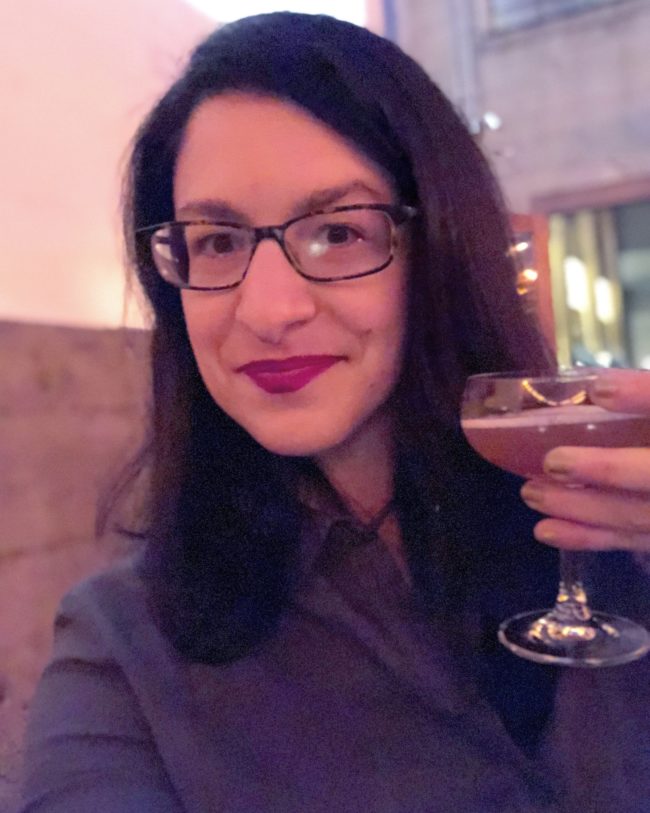
For dinner: the lavender baked goat cheese; the plancha with calamari, clams, and mole rojo; Ceviche; pasta with corn; the sesame fried chicken; and a steak with corn and peppers. Dessert was similarly blissful – a chocolate pot with a thumbprint cookie; and the standout – rose meringue with cherries, sorbet, vanilla almond cream. The film was Splash, but regretfully I was sitting right under the big screen, and my only comfortable view was that of the rest of the diners.
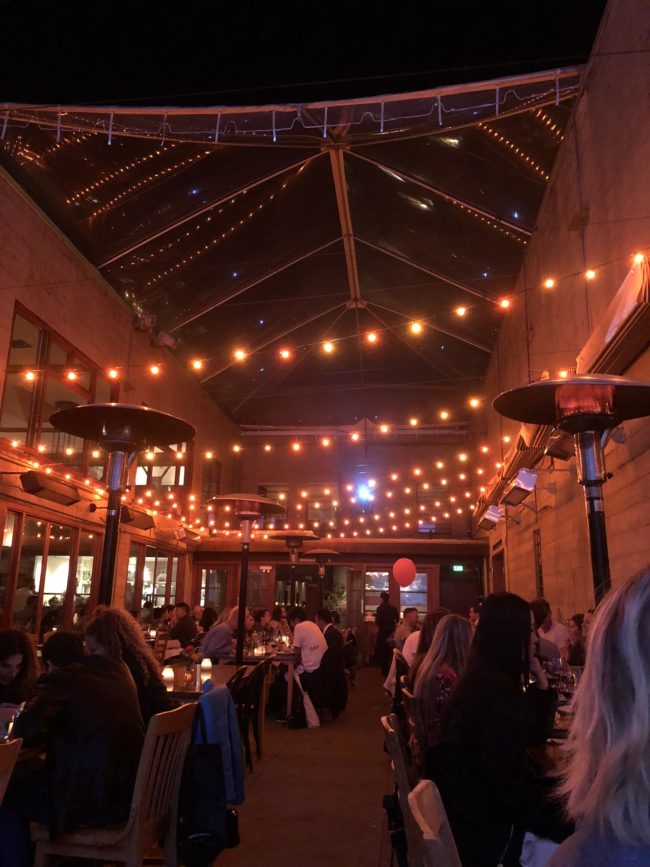
To extend the evening – we headed to the Make Out Room, where the DJ was playing a mix of Cumbia and early 00’s favorites – enjoyable until someone came up to us to ask if we were having “mom’s night out” (Who says that as a pick up line?? Also, so what if we were??), at which point he was escorted out of our eye-roll zone, and a round of tequila was ordered for the group. Our evening progressed – five minutes in a completely empty Double Dutch, and then wrapping up the night over quiet conversation at Casanova.
The next day: a plate of pasta with spring vegetables and tomato cream sauce at Merchant Roots (very good!), as well as a slice of warm carrot sandwich. I headed over to the Rothy’s show room to try on a multitude of sizes, but alas, determined that none were a perfect fit.
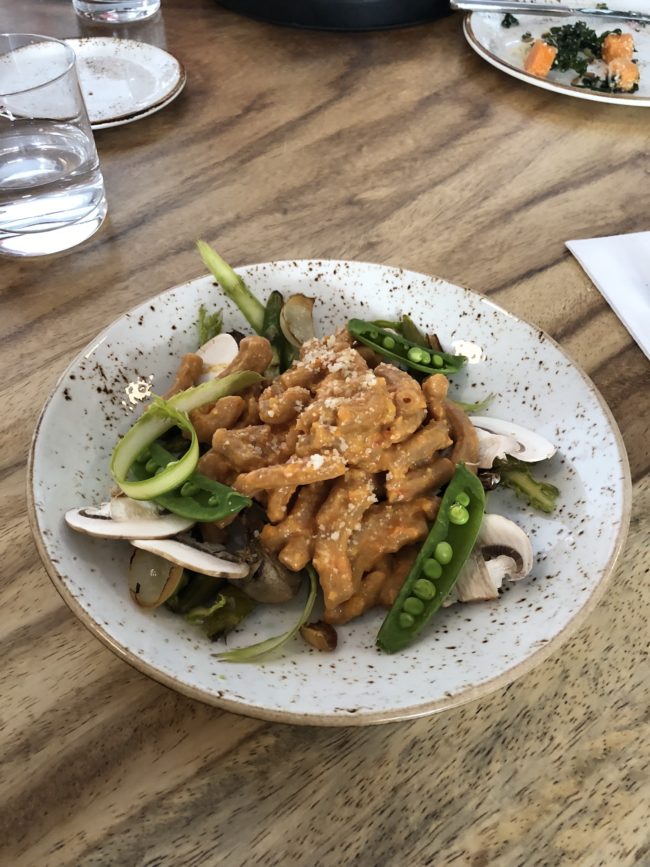
For my parting dinner, I had a reservation at Boulevard. I’d never been, despite long admiring Nancy Oakes, and so many of the accomplished chefs that have come up in this kitchen. We shared Spanish octopus; Sea Scallops, and a plate of salad with burrata. We shared the pork chop (the meat was perfect), and a steak; dessert was a peach tart and the summer berry buckle. My observation: classic, California, nothing flashy, just all executed well and the taste of the season.
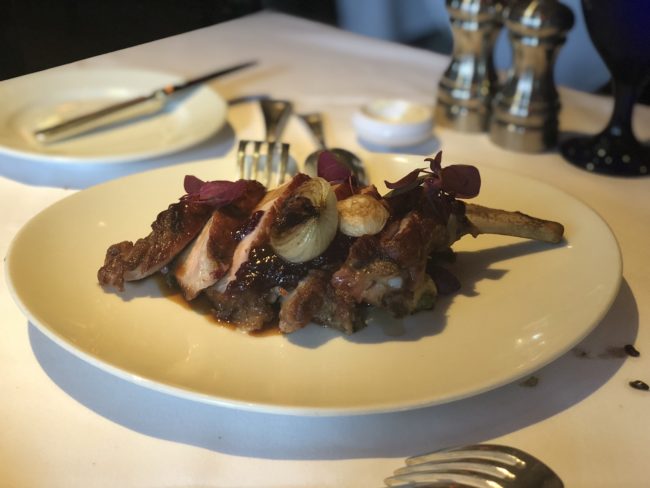
For my final morning, work people all packed up and headed their separate ways to the airport, and I had the house and the trails to myself for a final few hours.

Before heading home, I made one completely out of the way trip I couldn’t miss: I packed my bags, and took a Lyft from San Mateo to Berkeley for one last perfect bite.
Finally, two slices of always delicious Cheeseboard pizza, and a salad with yogurt and mint dressing. A last iced mocha Tesora at Philz, and then despite giving myself well over an hour to commute back to the airport, I barely made the airplane, arriving nearly 25 minutes after the plane had started boarding. I made it on the flight, waved out the window, and spent the trip listening to my audiobook. So long, Bay Area, I’ll be back before you know it.
PS: California, you are weird sometimes.

by Sam Tackeff | Aug 22, 2013 | Barbecue, Blogging, Food Travel, Meal Planning, Travel
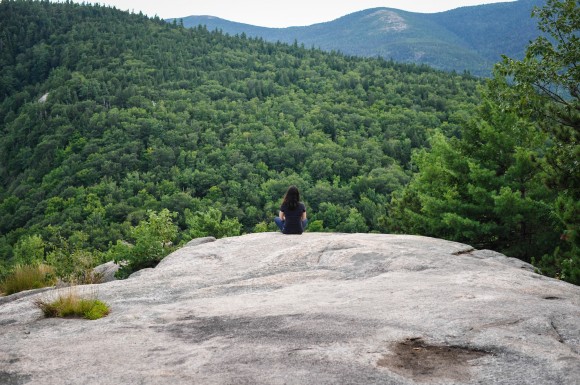
It’s Thursday already, and I feel like the week is escaping me. I’ve spent a lot of time thinking about writing and running – and how it helps to break up both into small increments, and it’s better if you only write a paragraph or run a single mile than none at all. On the running front, I’ve started a new 28 day streak to kick off the beginning of a long race season. At the beginning of summer I did a streak from Memorial Day to the Fourth of July, and I made it to the penultimate day, after which I pretty much sat on rear unapologetically. I find that it’s a heck of a lot easier to head out when I know that I “have to”. Before we discuss this week’s meal plan, here are some photos from a few weeks ago, from my trip out to North Conway. It was especially beautiful out there.

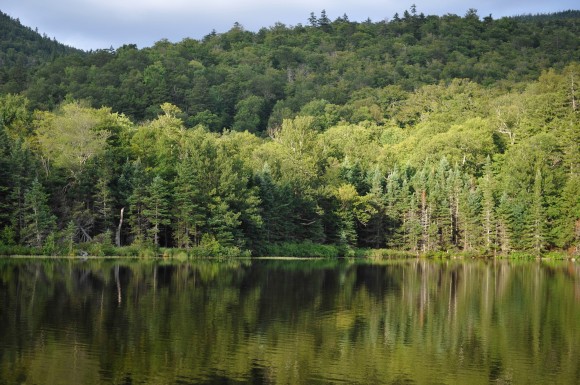
For nearly four days we were surrounded by mountains, rivers, and streams in Hale’s Location. (The smallest town in New Hampshire, and the first town to vote in the national election!) Alison and I hiked through the woods, headed up Cathedral Ledge, looked over to Echo Lake. We went on long drives, took photos of trains, visited popped into the wacky Zeb’s General Store, and browsed the shelves at White Birch Books. I had a great Cortado at Frontside Grind – a new coffee shop of note in the area. And we shopped at the outlets, which, I should let you know, includes a Brookstone outlet. I had to hold myself back from emptying my entire wallet. Those massage chairs at steep discounts? Mhmm? You know the ones. The men, on the other hand, were cooped up in the house recording all weekend. They did manage to accompany us one evening to the Ben & Jerry’s in North Conway, where we pulled up at the same time as a summer camp bus. The Coconut 7 Layer Bar Ice Cream was worth the annoyance. Also. Middle Schoolers these days. I think I’m old, because seriously the short length on those kids was scandalous.

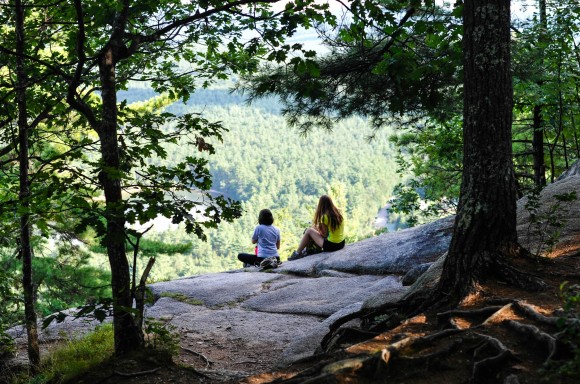
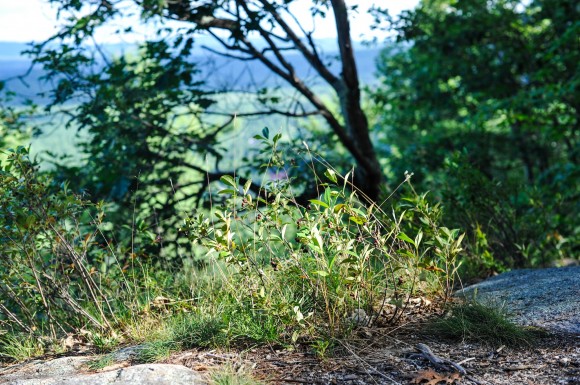
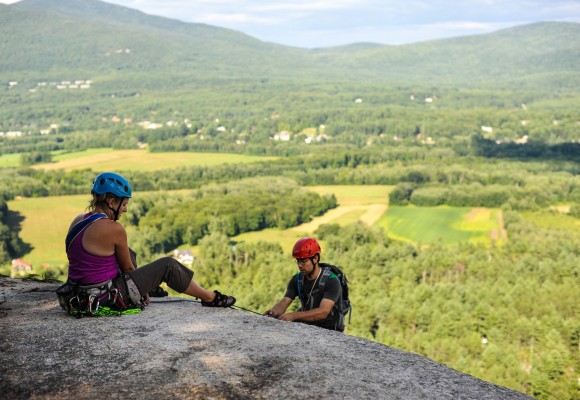
And then, of course, there was food. Massive, massive amounts of food. I took very few photos of food, possibly because we were surrounded by it constantly, and health went out the window. At some point I became deeply ashamed at how many Trader Joe’s mushroom turnovers and mini pot pies I consumed. There was Sicilian pizza from Elvio’s, croissants for breakfast, and elaborate sandwich spreads for lunch. Saturday we made dinner on the grill – hamburgers, hot dogs, baby potatoes, asparagus and corn. We made s’mores in the fire pit, and then the next morning there was warm fresh cornbread, biscuits, bacon and eggs. Monday morning we had pancakes, waffles, more eggs, ham, and bacon. And then there were pounds of food left, and we ate leftovers for days.
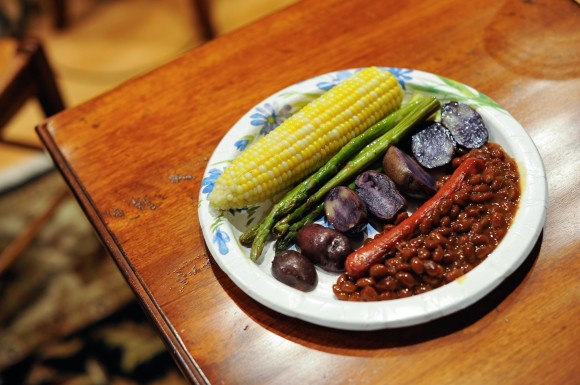
Coming home, I was craving kale like nobody’s business, and I’ve been stuffing myself with nutrient-packed meals for the past few weeks to recover.
This week’s meal plan includes home cooked meals every day this week, in preparation for a weekend in New York for the wedding (including three separate events!). Of course, Monday, our “home cooked meal” ended up being takeout Vietnamese food from Pho So 1 Boston in Randolph, after having to make a late night trip to IKEA to purchase three ceiling lamps for the electrician to put in the kitchen. Wait, that’s right, I now have THREE lights in my kitchen. That, I swear, is momentous. Not only can I take photographs of food at night now that don’t look horrific… I can probably have guests. Before now, the table in the kitchen was pretty much in darkness past 6 p.m.
:: Turkey Kofte (Turkish meatballs), with a big green salad with tomato, cucumber and avocado. Usually Sunday night is my seafood night, but my planned crab salad went out the window when the grocery stores were seemingly out of everything.
:: Orange-Mustard Baked Chicken Thighs. Loosely adapted from ‘Dinner, a Love Story‘, by Jenny Rosenstrach. Chicken thighs baked with a sauce of marmalade and mustard. Served with steamed broccoli.
:: Cumin Lamb Chops with Carrot Salad and Stewed Zucchini. Well, it’ll be cumin if I feel like it. The other option will be just lightly seasoned with salt, and topped with a vibrant salsa verde.
:: Wednesday Beans and Greens. I like the idea of having stand-by theme nights such as “taco night”, or “fish night” (Sunday) to help take the stress out of constructing a meal.
:: Creamy Tomato Chicken with Basil. Another dinner adapted from ‘Dinner, a Love Story‘, by Jenny Rosenstrach.
:: Crab Salad with Avocado, Tomato, Basil and Lemon Vinaigrette. This was supposed to be Sunday’s dinner – I even got a perfectly ripe avocado for the occasion, but alas I was thwarted. We usually have Friday night dinner out, but we will be staying in this week.
And Fitness? This week I’m going to be kicking it up into gear. I have several fall races coming up, including a 200 mile relay in less than three weeks, and I haven’t been doing a lot of running in the past three weeks, so I’ll be adding back in my daily mile, at minimum. This is a good excuse to build on my running. [The three miles of walking on weekdays is my usual their and back commute walk.]
Monday: 3 mile walk + mile run
Tuesday: 3 mile walk + evening stroll/mile run
Wednesday: 3 mile walk, CrossFit Olympic Lifting Class + mile run
Thursday: 3 mile walk + mile run
Friday: 3 mile walk + running
Saturday: Off – Mike + Keren’s Wedding (although, I’ll be walking in New York)
Sunday: Off – Mike + Keren’s Wedding
by Sam Tackeff | Jul 28, 2011 | Food Travel, Greek
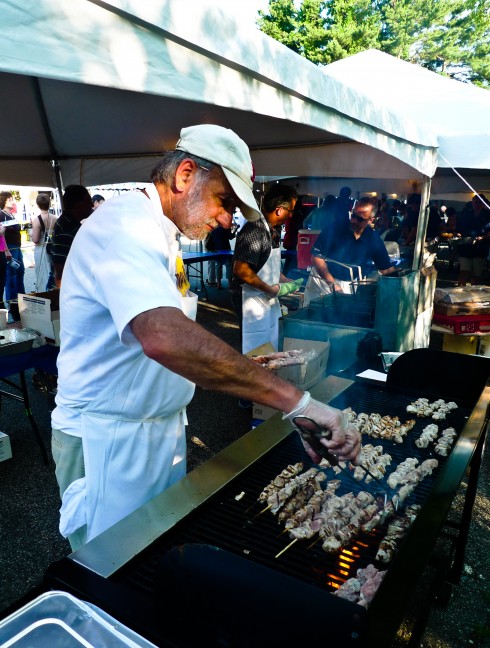
When I was in middle school, an awe inspiring shipment arrived at our door in New Hampshire: an entire barrel full olive oil from Yithion, Greece. This wasn’t just any olive oil; it happened to be from my great aunt and uncle’s own olive grove.
Getting the oil here was no easy feat. My mother spent weeks on the phone with my grandmother debating logistics. Will it get through customs? Will the barrel leak? Will the oil spoil? It was a long saga that ended fruitfully in several years worth of some of the best olive oil to touch my lips. I assure you, even the most pristine first cold press olive oil tastes even better when it is from your own families’ grove.
I’ve never actually been to Greece, which is truly a shame. The closest I’ve come is Istanbul (not the same, I know), where my Grandmother (half Greek) lives with her Greek Orthodox Icons hanging prominently next to her Jewish Hamsah (hand icons), next to the Turkish Boncuk (blue evil eye). I will proudly claim my different lineages, particularly when food is involved. Tasting that olive oil for the first time, I knew Greece was a part of me. When I finally make it there I will gorge myself on olives and feta, wild horta greens, and fish from the sea, and I will be very, very happy.
But, back to New England. A glorious event takes place in Portsmouth, New Hampshire that allows me to get my Greek on every year: the St. Nicholas Greek Festival. Perhaps Greek people just know how to throw a better party, but this happens to be one of my favorite festivities on the Seacoast. One can get meat on a stick, meat in a wrap, copious amounts of desserts, and very strong coffee.
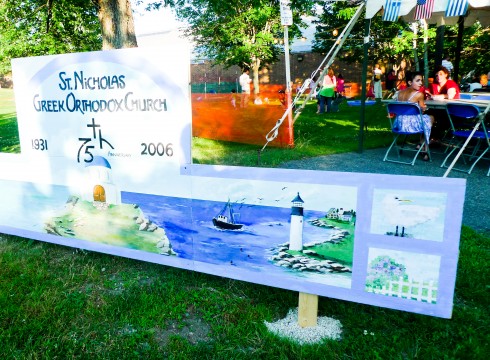
Maybe you have never been to a Greek Festival, but if you have seen My Big Fat Greek Wedding, well, it’s kind of like that. Seriously – when that movie came out, every one of my Greek and Middle Eastern friends went to see it with their entire families, and it was like watching reality television.
Greek festivals have been the place to go as long as there have been Greek people in this country. Many Greeks emigrated to America in the late 1800’s and early 1900’s. In an April, 1897 clipping from the New York Times we already see public announcements: “Greek Festival Here. The Grecian national fête will be celebrated in this city to-day, with services in the Greek Church, at 340 West Fifty-third Street.” Granted, at that time there was a holiday attached to the festival, and now mostly, summer seems a good enough reason to celebrate.
On the Seacoast, St. Nicks is located in a rather unassuming place right next to the Portsmouth High School and has been around for over 80 years. The festival started about thirty years ago, and I’ve been going fairly regularly for over a decade.
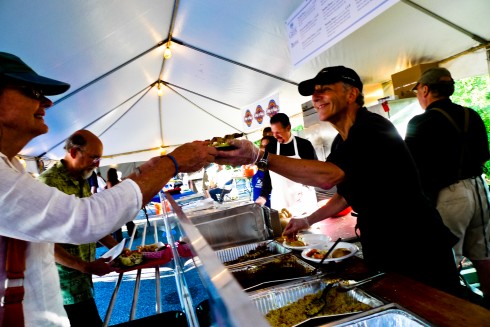
This year was exciting because Devon had never been to a Greek Festival, and it was the perfect event for him to experience both small town New Hampshire pride, and some “mother country” food.
My parents came along, as did my childhood best friend Sara – who gets points here for putting up with my tourist-like camera-wielding action for the sake of my blog, even though she found it a touch embarrassing.
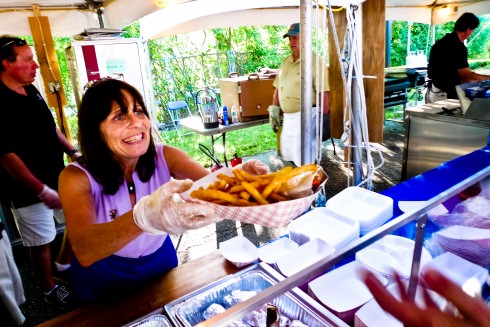
Food selections were mostly the classics: Souvlaki (charbroiled meat on sticks), or Pastichio (an ultra rich cross between mac and cheese and meat lasagna) or Moussaka (layers of baked eggplant, potatoes, and ground beef).
I went with a traditional Gyro (grilled strips of lamb and beef in a warm pita with cooling tzaziki yogurt sauce). Both Devon and my mom thought this was a good idea as well, so we ended up getting three of the same thing. My dad had the Baked Lamb Shank in tomato sauce, served over rice pilaf. Sara got a Greek Salad, but frankly, as a vegetarian you get cheated with festival food. We ordered Dolmathakia (stuffed grape leaves) in olive oil to share, although I ended up sneaking most of them.
The food was pretty great all around, except for Sara’s Greek salad, which suffered from being not much more than a massive plate of iceberg lettuce. The other failure was the breaded deep fried french fries which came out of a bag and were sopping in oil. Alas, you can’t win them all.
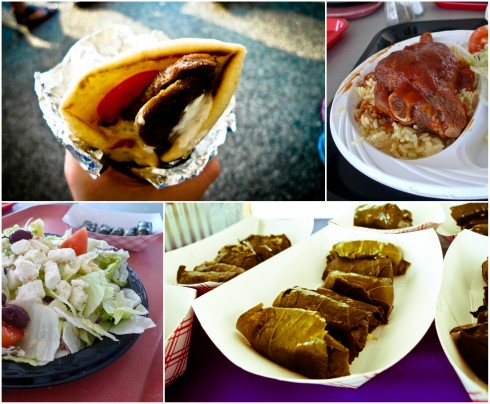
After our meal, we took a brief respite from eating to watch the children perform (8!) Greek dances. This is always more popular than the band alone, and everyone gathers around to watch. I’m always particularly impressed by the kids who have been enlisted to do this, because I myself would have died of mortification.
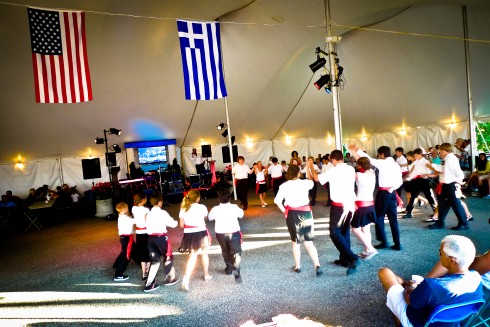
Next, we went into round two of eating: Loukoumades. These are essentially fried balls of dough, dipped in honey, and coated with cinnamon and powdered sugar. Unlike your typical boardwalk or amusement park fried dough, Loukoumades are surprisingly airy and light.
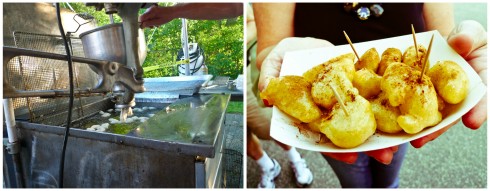
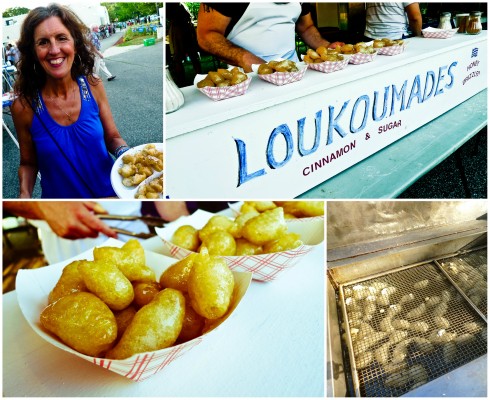
Our next stop was inside the church hall to the makeshift market. Here, all sorts of trinkets, t-shirts, and **phenomenally tacky** cds were for sale, along with a food market and tasting pavilion (in case you aren’t full yet, and would like to try some Greek honey or cheese to prime your stomach for round three).

After shopping, we moved onto coffee. If you haven’t had Greek (or Turkish) coffee, you haven’t lived. These people know how to make coffee. Smoother and stronger than an espresso, a centuries old proverb sums it up well “Coffee should be black as hell, strong as death, and sweet as love.” Typically though, I like it a little less sweet than the old men drink it. The preparation involves stirring the grounds in a little pot, heating them up precisely, and adding a little sugar, and then pouring it all into a small cup, being sure not to pour in the dregs.
If you are special, you finish your cup, turn it over onto the saucer, wait until it dries, and then let someone read your dregs (akin to reading your tealeaves). Preferably a grandmother. I know mine does.
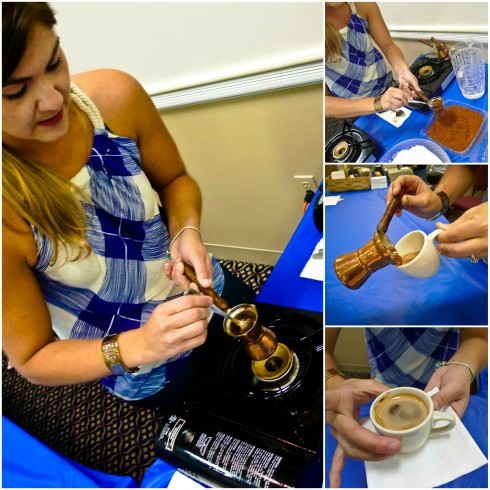
And finally, the highlight of the evening, dessert! Greek pastry is so much more than the sad, oversweet baklava that you can find mass-produced for coffee shops. Greek pastry is a centuries old miracle of tweaking and finesse, resulting in perfect little bites of sweetness, richness, fluffiness and crunch.
I will admit however, that by the time I arrived at the pastry station I had already been defeated, and it took all that was in me to even photograph the dessert.
Here, clockwise from top left are some of my favorites: Kourambiethes (Greek wedding cookies with chopped almonds), Kataifi (finely shredded filo pastry with a walnut filling and honey syrup), Baklava (layered filo in a honey syrup), Amygdalota (almond macaroons), Mil-Feig (ie: mille-feuille, layered filo with pastry cream filling topped with whipped cream and almonds), and Finikia (greek spice cookies drenched in syrup).
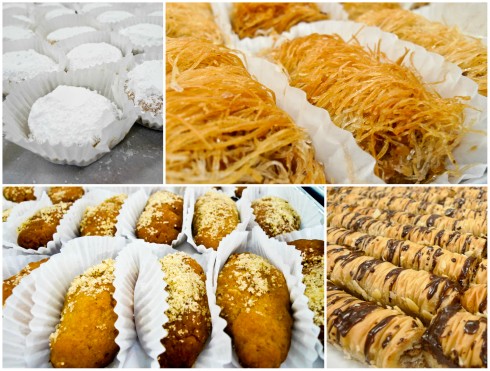
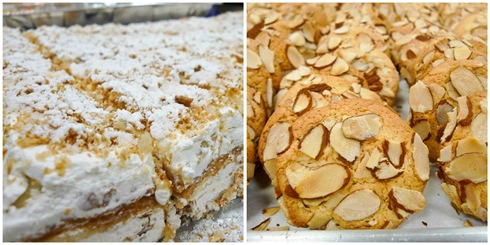
Despite my protests, my mother had the foresight to purchase a few Kourambiethes and Amygdalota to go. On our way out, there was still an ever growing line for the food.
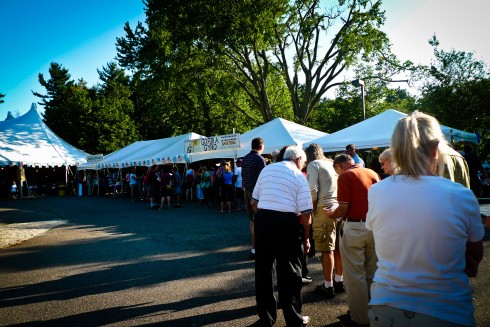
For those of you fortunate to live in near proximity to a Greek Orthodox church, I urge you to check out the local calendar to determine when their Greek Festival will be held this summer, and GO.
Yiassou!!
by Sam Tackeff | Oct 16, 2010 | Books, Food Travel, omnivore books
 (photo: Nader Khouri Photography)
(photo: Nader Khouri Photography)
I don’t get star struck. There is something about the notion of being starstruck I find completely absurd. Girls going apoplectic over a 15 year old “hottie”? Waiting for five hours in the broiling sun to get a glimpse of an actor? Or stalking your favorite pop star for that matter? I just don’t get it.
But then again, I’ve been trying to shake the weirdest feeling. One of those feelings where I’ve been run over, had my first kiss, finished a marathon, and won a million dollars… all in the same day. Shit. Is this what being star struck is like? It has been a week since I had the pleasure of hosting René Redzepi here in San Francisco, and I’m still feeling all a quiver.

(Photo: Phaidon Press)
Let’s be clear here, I had no idea what I was getting myself into. With Celia on vacation in Istanbul, I’d been manning the fort at Omnivore for a few weeks. Sure, I had no problem running a few events. Rock Star chefs? I can handle it. No problem Celia!
And then one day it started – a delivery man came with an entire palette of boxes.
Inside? The Noma Cookbook. 1300 pounds of the Noma cookbook, to be exact. It’s an obscenely beautiful book, put out by Phaidon, weighs nearly five pounds, and is covered in gray cloth. Three quarters of the book are striking photos of the gastronomic creations that have catapulted René Redzepi’s Noma to stardom; this year, Noma has been named the best restaurant in the world.

(photo: Nader Khouri Photography)
On Sunday night, I couldn’t sleep. Thinking about the Monday lineup was exhausting. A three o’clock signing at the bookstore, close up shop, take all the books and head over to Delancey Street Theater for a two hour talk with Redzepi and Daniel Patterson, check people in, sell books. Racing thoughts kept me awake, terrified. What if I can’t handle it? What if we screw up? What if someone has broken into the bookstore and stolen all 1300 pounds of books — a serious fear brought on by my sleepless delirium.
In hindsight, of course, I had nothing to worry about.
What can I tell you about René Redzepi?
In only a few hours I was able to unequivocally deduce that he is one of the most gracious, intelligent, driven people I have met. (He also has a voracious appetite for knowledge, and snagged some of my favorite historical books on food, including rare copies of Jane Grigson’s Vegetable Book and Fruit Book, and Marinetti’s The Futurist Cookbook.) He took the time to sign and personalize every book, take pictures with adoring fans, and joke around in between. And he’s adorable.
When he spoke, I took notes – 12 pages of notes – which I’m going to do my best to recount without sounding like a rambling idiot.

René Redzepi and Daniel Patterson Do Stand Up
What happens when you get two chefs on stage together and a captive audience of 150 people? Somehow, they both managed to utter the phrase Seal-Fuckers and everyone finds it hilarious.
For two hours, what unfolded on stage was something incredible. Something I believe everyone will be thinking about for years to come. A combination of a comedy routine, storytelling, and critical analysis. I think it’s safe to say the audience was thoroughly moved by the presentation.
In his introduction, Daniel Patterson – of Coi in San Francisco and the newly opened Plum in Oakland – was clearly excited to be sharing the stage with Redzepi. And who wouldn’t be, really?
Patterson described Redzepi as the master of “cooking from your own place”, and extolled what makes him the best in the kitchen: “Intuition – he’s a scary good cook. Super distinctive and sharp. Watching his mind work? So, so, fast.” To be a chef of this caliber, it is not just about skill, it’s also something deeper. “There’s an incredible warmth, a very strong emotional foundation. There is real joy.”
As the talk commenced, the audience was instructed to look through a little cloth bag under each seat filled with freshly foraged herbs, hay, and a small packet of Angelica root (known in Chinese medicine as Dong Quai). As you opened the bag, fragrance exploded and you were instantly transported to the forest. The bag was so fragrant, in fact, that after leaving it overnight in my leather purse, I’m beginning to believe it has permanently scented my handbag.
It Starts In Childhood
Some of Redzepi’s earliest influences were from an upbringing spent traveling between Denmark and his father’s native country, Macedonia.
In Macedonia, if you wanted food, you grew it. And what you didn’t grow, you traded with your neighbors, or perhaps picked up at the baker. Driven mostly by poverty, but also a sense of pride in their own food, life there was back to the land. The people were poor but not wanting in good food.
It’s not surprising to hear Redzepi didn’t drink soda until he was an adult. Special drinks were syrup over rose petals, or milk (provided that you milked the cow), but mostly, there was water.
In contrast, Denmark in the 1980’s was captivated with the microwave and ready meals. As a child, Redzepi recalled some embarrassment about heading to Macedonia (particularly while his Danish peers were off spending their summers in Italy or France). In hindsight, experiences foraging, farming, and eating from the land have only served him well. His family grew peppers and watermelon. Watermelon, he joked, is the perfect food:”You eat, you drink, and you wash your face”.
But good things don’t last forever, Redzepi lamented, “when the war came, people fled, and slowly as they have returned, life in Macedonia has become more Westernized. They used to sit on the floor, eat with fingers from platters of food as a family, and everything was cooked.” But that is no longer true, and as we are seeing all over the globe, cultural legacies are being lost.
Education Leading up to Noma
When he entered chef college, he became instantly smitten by cuisine. Originally, Redzepi assumed he was going to do his version of French food, but then he went to stage at El Bulli in ’98 – and ’98-2002 was a great time for the restaurant. “For me, I left that place with such a sense of freedom.” From there, he headed West to California for a stage at French Laundry.
At French Laundry, he was further energized. Here was a great Chef [Thomas Keller] with such a strong signature – “An American chef doing something American”, with ingenious dishes like “Coffee and Donuts”.
After traveling the world, the passion to do something new, unique, really something uniquely Danish, was solidified.
And so, seven years ago, he opened his first restaurant, Noma. He was 25.

Noma is located in the Christianshavn area of Copenhagen, Denmark. The building’s original use was as a warehouse for North Atlantic imports, and the rooms that the restaurant is housed in were used to store salt. The owners wanted a chef whose cuisine could in some way reflect the history of the place. And so, Noma moved in, with a noble goal of creating “high gastronomical cuisine using what was around us.”
At the time, basically all top level restaurants in Denmark were using European products. It was the standard. There was such a disbelief in the project. “It’s amazing how little faith we ourselves, the people, had in our own products.”
What unfolded was what Redzepi described by quoting Schopenhauer: “All truth passes through three stages. First, it is ridiculed. Second, it is violently opposed. Third, it is accepted as being self-evident.” (Yes, the only chef I’ve heard quoting German philosophers.)
To put things in perspective about how hard they worked, Redzepi wasn’t happy even receiving their first Michelin star within a year of opening the restaurant. “At first, there were still too many reference points from other cuisines.” The idea of being local is easy. The difficult part is how you take “local” on the plate and make it work.
And so they started seven years ago rediscovering ingredients “so that they taste of their own place”. Chefs often read a lot of recipe books to draw inspiration, but Redzepi found that he needed to start reading other books – history books – to learn what people ate over the ages. And he spent a lot of time talking to historians.
As we listened to Redzepi describe this, Patterson shook his head in admiration: “There is a determination – Rene works a lot. He’s worked his ass off for years. There is a constant pushing.” To which Redzepi replied: “If you don’t have patience and commitment to the extreme and are not manic in your pursuit for this, it can’t happen. You have to work for this.”

Five Dishes
At this point, although I could have listened to hours of just conversation, we got to see a video of five dishes with notes from nature to plate. Most of the dishes at Noma are created with nature as the direct influence. Redzepi explains: “A lot of people ask “why is it so landscape-y?” It’s a reflection of where we go, walk, live….this is just the way things have shaped.”
The cuisine at Noma is so dependent on the weather and the seasons, it can change every day.
Redzepi began by introducing the ingredients he works with: “In Denmark, if there is any prejudice against our region, it’s that it is extremely cold and people think no ingredients can grow. But it’s a matter of determination and hard work.”
Taste is integrally linked to place. He explained (without prejudice) that things in America taste almost overly sweet to his palate – which happens to be because produce here has so much more time in the sun, than in Denmark where the flavors are much more mineralized because the plant gets nutrients mostly from the ground in their harsher climate.
Each dish has its own story, and unfolds with whim and novelty.
There was ‘Asparagus and Spruce’, where the green asparagus tips are grilled, then juiced. They add a touch of spruce oil, and then wrap white asparagus around actual spruce leaves, top with the juiced asparagus, and add a touch of whipped cream.
Or the ‘Steamed Oyster’, composed of the oyster, as well as plants sourced from the land around the oyster flats. So you have these native oysters, and then unripe pickled elderberry, and the dish is created by pouring seawater on, and steaming it in almost its natural environment.
Or “The Sea”, where a dish is composed from sea herbs rich in vitamins, sea water, rocks and beach plants. Topped with dried shaved urchin roe, arranged as if they were in their natural environment.
Or the ‘Hen and the Egg’, where the chef thinks what is a chicken? The whole dish is created from a starting point (the hen house) and the meal is created completely from ingredients a few feet around it. The egg, the hay from the coop, the herbs the hen eats. And then the whole dish is interactive – the diner actually puts together the dish and eats it.

My favorite dish however, was the ‘Vintage Carrot’, because it truly reflected the essence of the creativity on display at Noma.
A vintage carrot is actually a vintage ingredient.
They were having a winter like Ragnarök (the Norse mythological version of Armageddon), and it was “so crazy cold”. The chefs were running out of things to cook at Noma, and were desperately working with their farmers to find something they could serve. One farmer had these old hideous carrots he had left in the ground for a winter, and then stored them in his larder. They were year and a half old carrots. So they thought to themselves, how would you cook a carrot like this?
Maybe like you would cook a piece of perfectly aged beef – with as much care as possible. “So we wanted to do that with a carrot. What would happen if we gave the same care to a shitty old carrot?”
And so here is this dish, composed of vintage carrots, gently cooked with wild chamomile and sorrel in goats’ butter. They cook it, very slowly, an hour, hour and a half, and then suddenly it’s the carrot of their dreams.
And then he thought: SHIT. What if we are now eating the wrong carrots? What if this was the RIGHT carrot? The way carrots are supposed to be? The authentic carrot?
“So we asked the farmer – what other old shit do you have? Give us your crap! And then he got us vintage potatoes…” so the story goes.
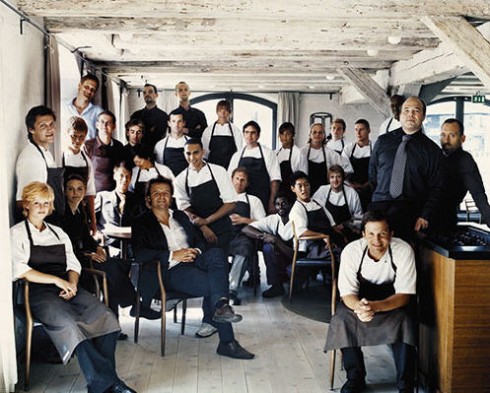
CONVERSATION AS THE FOUNDATION
“The importance of people and the importance of conversation is just about everything for us.”
After fully transfixing us with food, the conversation returned to the work they put into the restaurant. Possibly the only frustration I have with the Noma book is that the front section on the day to day happenings of the restaurant is only a handful of pages. (Maybe that’ll be the next book.) Listening to Redzepi, these details are clearly things that he has thought long and hard about.
Noma has 20 full time employees, and 5-8 stagiers (interns – for one to three months) at any time, and the empowerment of each and every team member is an integral part of Noma’s success. The work is highly technical, and many people are involved in each and every dish. All this for forty covers a night. “The kitchen is full of good people, free thinking people – people who take standpoints on what they are cooking,” he went on. “Our trade is one of the last trades that will never be replaced by machines… you need to think”.
In addition to the hard working kitchen staff, they also work hand in hand with the farmers. Noma has a large network of farmers and foragers. They worked hard to cultivate these relationships. Just by giving feedback and respect to the farmers (a group of people, on the whole rarely congratulated for their hard work), they found these people striving to do better. “There is a sous chef in the kitchen to make sure the farmers feel that they are a part of us… They get Christmas cards every year, and every year they are invited to eat at the restaurant. We are having so many conversations with them constantly. If these people were not on the team, we wouldn’t have a restaurant.”
To further the education of his kitchen, Redzepi detailed several ways to make a better chef:
1. Make them harvest, prep, cook & serve. (Instill the feeling of giving.)
Each of the staff at Noma are taught to forage and harvest, which changed how the kitchen thinks about food. Chefs are usually trained to work within the format of recipes, but Redzepi knows first hand that chefs start changing when they really know how things grow. There is something so important about the conversation in nature, “I know it sounds a bit wacky,” Redzepi chuckled, “[but you need to have] a conversation with the plants in the forest. There is something so valuable about learning the essence of taste from the source in its perfect element. You know, the way it should be. How much would you allow yourself to do with this ingredient? [This] reflects how you treat an ingredient in the kitchen.”
How can a restaurant have the same feeling of giving if they charge for their meals? The chef was quick to make note that “in a perfect world, all restaurants would be free”, which he amended: “In a perfect world, all restaurants would be subsidized by the government.” [The audience laughed.]
By requiring everyone to have the opportunity to serve, you create better chefs. Actually seeing guests, they take a better standpoint on cooking. It’s the feeling you get as a parent feeding a child – you want to provide the best and most healthy and perfect food – they adopt the same philosophy for their diners.
2. Every Saturday they have an innovation practice in the kitchen, after service (about 2 am). Everyone has worked 75-80 hours or more. Each section has a head chef who creates a dish – the purpose is to “make chefs take a standpoint on what they enjoy about food.” In the beginning, it is very difficult – but week by week – people get better, stronger. They start really developing themselves as chefs.
This is one of the many reasons chefs around the world fight to work in Redzepi’s kitchen.
* * *
As the conversation neared its close, a member of the audience asked Redzepi “What’s next?” to which he replied:
“The biggest joy is now having complete freedom to cook what we want.” Redzepi laughed, “If we want to put reindeer balls… or beaver snout… we could put it on the menu, and people will try it.” Next is the same… until there is no more inspiration. “I have a personal vision of keeping learning throughout my life, and keeping my family learning.”
“Year by year, season by season, you start to understand more, and it starts adding up.”
* * *
As people filed out of the theater, my admiration was only reaffirmed, as René stood next to me while I sold books, and he personalized them, chatted, posed for photos, and put a smile on peoples’ faces.
Am I star struck? Maybe. A little. But, I’d like to think my jitters came from experiencing a critical moment – one where I was forced to think hard about what I had thought was true. I had to accept something new and profound. After seeing someone with so much passion, dedication, and thoughtfulness, a small part of me regrets not becoming a chef. But for now, I’m taking the time to think about what this will all mean for me. Who knows where life will take me?
And so, here, I share one slightly embarrassing photo that Emily took of us, (give me a break, I’d been working like a fiend the entire day), and would like to take a moment to say thank you to everyone who made this day possible.
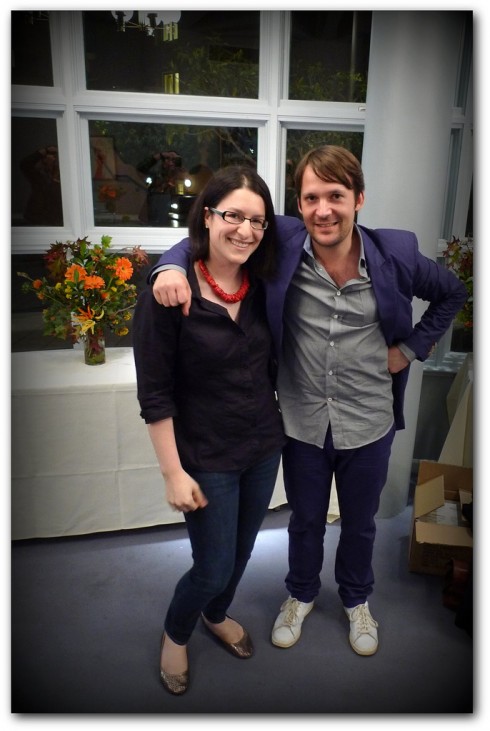
Noma: Time and Place in Nordic Cuisine (Phaidon Press, $49.95) by René Redzepi, www.phaidon.com
by Sam Tackeff | Jul 2, 2010 | Books, Food Travel, omnivore books, Soups
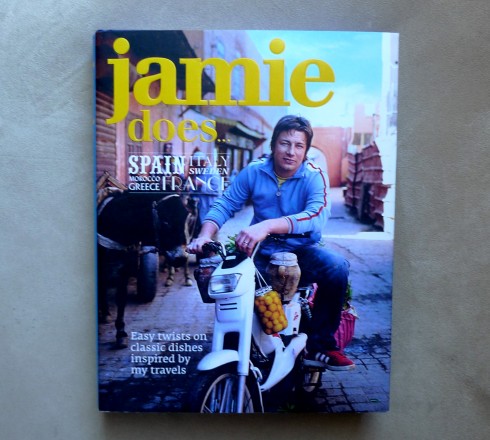
I have a little secret to share with you. Ok, so it’s not a secret to anyone who knows me, but, I happen to be obsessed with Jamie Oliver. It started in 1999, right around when we first got cable television, I discovered the Food Network, and then I discovered the Naked Chef. It was one of the first cookbooks I cooked through. I should have blogged about it. Oh well. When Jamie married Jools, I put his photo up next to my bed (which I had clipped from my grandmother’s People Magazine) and cried a little bit.
I can’t believe that it was over 10 years ago. Now, 14? 15 books later? He has come out with a new one – except it isn’t out in the states yet. Jamie Does is another brilliant book from Jamie Oliver that I encourage you to get your hands on. Don’t be put off by his media presence – he is legit – I assure you this man can cook seriously good food.
I took home a copy of ‘Jamie Does‘ about a month ago from Omnivore, and could not be more excited about it. It’s a fantastic cookbook. The premise is based on Jamie’s travels across Europe and North Africa (Lucky Bastard!) : he heads to Spain, Italy, Sweden, Morocco, Greece and France, searching for the flavors, techniques, and recipes of each country.
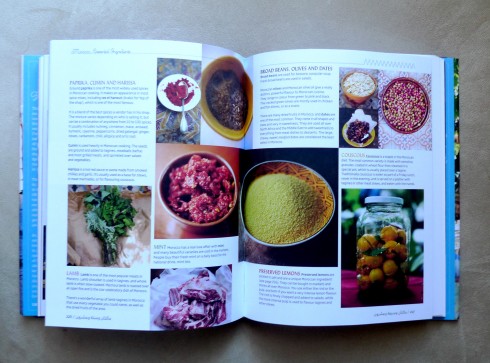
There are so many reasons I love this book (aside from the fact that everything Jamie Oliver does is wonderful,) but my favorite part are these beautiful spreads of the main flavor components and ingredients of each country. The tagline of ‘Jamie Does’ is “Easy twists on classic dishes inspired by my travels”. So many people are afraid to cook new types of cuisines, but as long as you have the flavors and the general cooking techniques, you can fiddle around and make things taste delicious and fairly authentic.
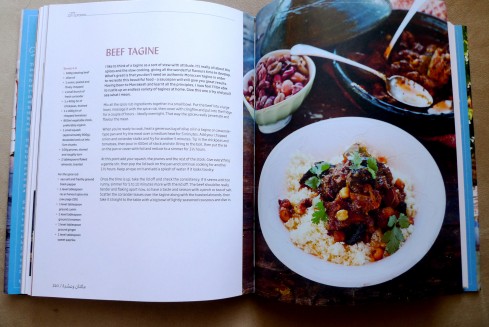
Each page of this cookbook is filled with beautiful spreads and photographs by David Loftus – real food that you want to eat, and feel empowered to prepare. You don’t have to go to these places to eat, you can travel right in your own kitchen. (Although, frankly, this cookbook makes me yearn to whip out my passport and my credit card and make reckless financial decision…) And yes, there is a tv show. I’ve been watching the grainy version on youku, because British networks are cruel, cruel people and will not stream online to the U.S. audience.
Here are links to more of Jamie’s recipes: head over to his website to access hundreds of his recipes . An incredible resource!! And of course, he’s on twitter, too. Now if only we could get him to Omnivore Books for a signing….
* * *
Last night I put together a quick summer minestrone soup with some of the contents of my farm box. I also had a loaf of bread that our neighbor baked, which needed to be eaten, and I decided that soup would be the perfect accompaniment. After searching for the proper treatment for my veg, I was inspired by the ‘Spring and Summer Minestrone’ in ‘Jamie Does‘
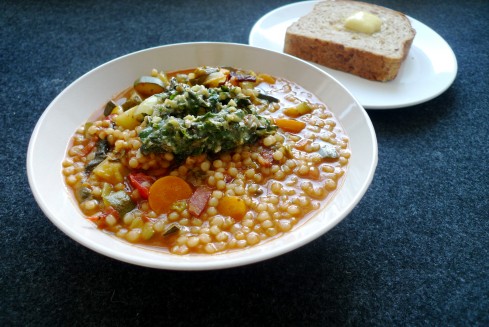
Spring Minestrone with Pesto
adapted from ‘Jamie Does’
Serves 2-3, 25 minutes
In a heavy bottomed pot, heat a glug of olive oil. Saute an onion, a couple of chopped carrots, a few cloves of garlic, and a few slices of really good thick cut bacon, chopped. After those have been going for about 5 minutes, add in two chopped zucchini, and cook for a few more minutes. While that’s going, chop up a tomato, and a bunch of parsley, and whatever greens you have in the fridge, and stir it all in. Swiss chard? Kale? All I had was lettuce. It worked just fine. Add a handful of peas if you have them (I didn’t.) And then cover with some good organic chicken or vegetable stock. Bring to a boil, and add a small handful of pasta (I used 1/2 cup israeli cous cous). Season with salt and pepper, and turn down to a simmer for 10 minutes.
While the soup is going – you make your pesto. A classic pesto will have fresh basil, garlic, pine nuts, parmesan and olive oil. I had basil, garlic, walnuts, Kerrygold Dubliner with Irish Stout, and olive oil. It worked out just fine. I dumped a large handful of the basil into my mortar and pestle with a pinch of coarse salt, and bruised them well. I added a few cloves of garlic, a couple of walnuts, and made a paste. I grated in about an ounce of cheese, and loosened it all up with a few good glugs of olive oil.
When the pasta was cooked, I ladled it into bowls, and topped with a dollop of pesto. I toasted thick slices of the bread, and topped them with a pat of Kerrygold Butter.
by Sam Tackeff | Jan 29, 2010 | Farmers Market, Food Travel, Local stores
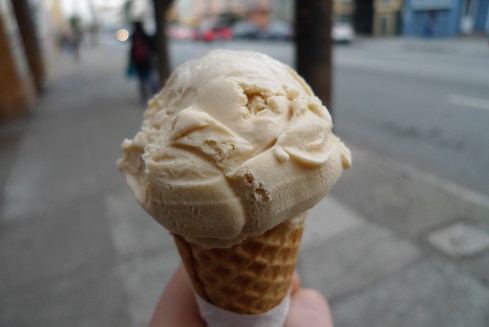
Yesterday was the Underground Farmers’ Market in San Francisco. My initial plan involved walking over to The Mission to get some exercise before gorging myself in the underground. Instead, I lazily took the MUNI to 18th street where on the way, I was “accidentally” seduced by a chalk board that boasted exciting flavors at Bi-rite Creamery. I couldn’t restrain myself. I ended up with a cone of earl gray, which I blissfully ate as I walked through the neighborhood. You know… to prime my stomach.
The SF Underground Farmers’ Market is an event that allows small time vendors to get their businesses off the ground and test the market with their wares. It’s been organized by Iso Rabins from Forage SF, who has done a brilliant job of putting together a great community of vendors and people looking to support the local food movement.
This location was in a moderately awesome space on Capp Street. (Up a mysteriously lit set of stairs, which evoked memories of basement raves at M.I.T. Yep. Nerd.) Despite arriving punctually at its 5pm opening, the place was already packed! I heard from Iso that he had a list of over 600 people signed up, and there were more registering at the door.
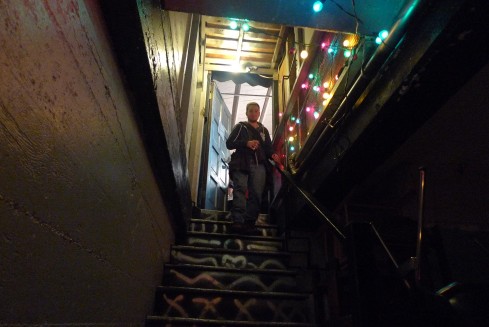
There was a plethora of options and the market was heavily skewed towards gently prepared foods: ranging from sauerkraut, kombucha, honey, chocolate, mushrooms, pies, lasagna, bread, and sandwiches. There was live music, families with small children, and plenty of happy, food lovin’ people to share the evening with. Fun!
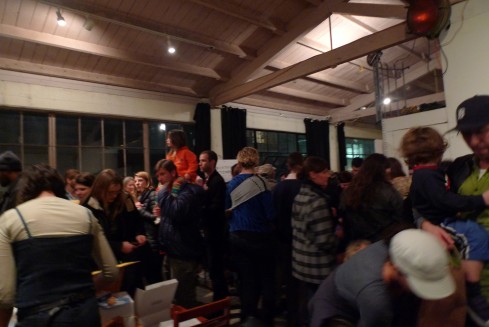
My first big stop was to see Shakirah of Slow Jams (this lovely lady below, being interviewed on the camera). I heard tell that her Blood Orange and Meyer Lemon Marmalade was to die for, so I snatched one up before anyone else could get to them. I also managed to score the lone jar of her Milk Jam, which Jessica from the Golden Crust was using in some amazing cream puffs she was selling at the market.
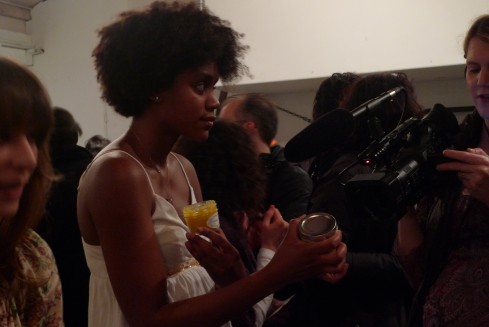
Her jams are beautiful, as are the cute containers! Which is another trend I’d like to point out – the Underground Farmers’ Market was filled with simple, pleasantly aesthetic design. Not really a surprise, given that these entrepreneurial folks have a great sense of taste. Including the limited edition poster from local artist Philip Clark. (Really though. I considered buying one to spruce up the ol’ abode, but now, my apartment is only decorated in regret. Maybe next time Phil C.)
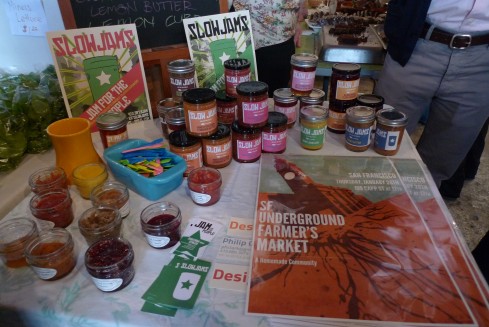
After making my initial rounds, I ended up purchasing a jar of raw local honey from Oakland, two Slow Jam jams, and a few bags of delicious Treat granola (which was stirred into my morning oatmeal with great success). While there, I ate a fair deal more than that, including my absolute favorite food of the evening: the corned beef sandwich from Pearl’s Kitchen, with lightly spread mustard on caraway bread. Pictured below is a woman holding said Manna from Heaven. Where my Jews at? Can’t these people open a deli in San Francisco? I’m pleading!
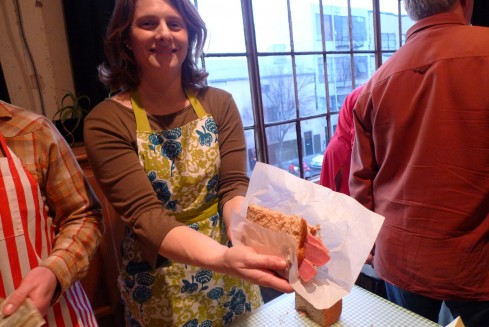
I could have eaten three of these.
Don’t miss out next time! SF Underground Farmers’ Market is gearing up to be a monthly event if Iso can swing it.
SF Underground Farmers’ Market
When: (Hopefully monthly)
Where: Secret-ish location, changes each time. (This last one was in the Mission at Capp and 17th)
How: It’s free! But sign up is required.
Sign up HERE to be on their mailing list.






















































